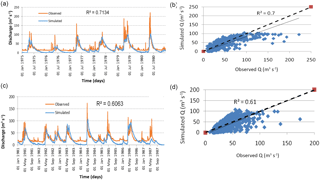Assessment of impacts of climate change on surface water availability using coupled SWAT and WEAP models: case of upper Pangani River Basin, Tanzania
This study was designed to investigate the dynamics of current and future surface water availability for different water users in the upper Pangani River Basin under changing climate. A multi-tier modeling technique was used in the study, by coupling the Soil and Water Assessment Tool (SWAT) and Water Evaluation And Planning (WEAP) models, to simulate streamflows under climate change and assess scenarios of future water availability to different socio-economic activities by year 2060. Six common Global Circulation Models (GCMs) from WCRP-CMIP3 with emissions Scenario A2 were selected. These are HadCM3, HadGEM1, ECHAM5, MIROC3.2MED, GFDLCM2.1 and CSIROMK3. They were downscaled by using LARS-WG to station scale. The SWAT model was calibrated with observed data and utilized the LARS-WG outputs to generate future streamflows before being used as input to WEAP model to assess future water availability to different socio-economic activities. GCMs results show future rainfall increase in upper Pangani River Basin between 16–18 % in 2050s relative to 1980–1999 periods. Temperature is projected to increase by an average of 2 ∘C in 2050s, relative to baseline period. Long-term mean streamflows is expected to increase by approximately 10 %. However, future peak flows are estimated to be lower than the prevailing average peak flows. Nevertheless, the overall annual water demand in Pangani basin will increase from 1879.73 Mm3 at present (2011) to 3249.69 Mm3 in the future (2060s), resulting to unmet demand of 1673.8 Mm3 (51.5 %). The impact of future shortage will be more severe in irrigation where 71.12 % of its future demand will be unmet. Future water demands of Hydropower and Livestock will be unmet by 27.47 and 1.41 % respectively. However, future domestic water use will have no shortage. This calls for planning of current and future surface water use in the upper Pangani River Basin.









